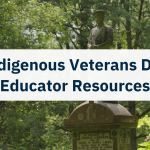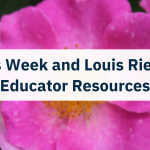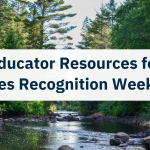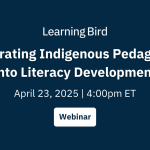6 Common Pitfalls in Indigenizing the Classroom—and How to Avoid Them
There’s a growing movement to Indigenize classrooms as part of a broader effort to acknowledge and incorporate Indigenous perspectives, knowledge, and pedagogies into our educational systems.
Educators who are making these efforts do so from a place of sincerity. We recognize that Indigenizing our classroom benefits all learners, even those who are not Indigenous. Despite our best intentions, it’s easy to make mistakes during this process.
In this post, we’ll examine some of the most common pitfalls of Indigenizing the classroom and suggest ways of avoiding them!
Pitfall #1: Superficial Inclusion or Tokenism
One of the most common mistakes educators make when beginning to Indigenize their classrooms is tokenism—where we include Indigenous content or perspectives in a superficial way. Tokenism can look like the occasional inclusion of Indigenous stories, symbols, or practices without integrating these elements into the broader curriculum or teaching methodology. An example of tokenism would be using a teepee as a quiet space in your classroom without discussing its importance to Indigenous Peoples.
Solution
Educators should strive for a deep and meaningful integration of Indigenous knowledge. This means going beyond symbolic gestures and incorporating Indigenous worldviews, epistemologies, and pedagogies into the fabric of the curriculum. Including Indigenous knowledge in a meaningful way requires you to learn more about Indigenous Peoples yourself. Collaborating with Indigenous communities and experts can provide valuable guidance and resources for a more authentic inclusion. You can find some excellent resources to help you learn more about using Indigenous pedagogies in the classroom from UBC.
Here are some ways you can integrate Indigenous knowledge in a meaningful way:
- Invite Indigenous speakers to your classroom.
- Use Whose Land to find out which Indigenous territory or territories you currently occupy.
- Try using an online Indigenous language app, like First Voices, to begin learning some vocabulary! Supporting language revitalization efforts and highlighting the importance of language in cultural identity can deepen learners’ understanding and appreciation of Indigenous cultures.
Pitfall #2: Lack of Cultural Competence
A lack of cultural competence among educators can hinder the effective Indigenization of the classroom. Without a deep understanding of Indigenous cultures, histories, and contemporary issues, educators may use outdated, inaccurate, or insensitive sources, perpetuating stereotypes and misconceptions. A lack of cultural competence can also lead us to overgeneralize. Indigenous Peoples are diverse, with distinct languages, traditions, and histories.
Solution
Professional development and ongoing education are key to building cultural competence. Educators should seek training opportunities, professional development workshops, and courses focused on Indigenous histories, cultures, and pedagogies. Use only accurate, up-to-date, and culturally sensitive resources. Building relationships with Indigenous communities and engaging in open, respectful dialogue can help you develop your understanding and ensure the information presented is respectful and accurate.
It’s also important to emphasize the diversity within Indigenous cultures to our learners. We can do this by highlighting different Indigenous groups’ unique characteristics and contributions and by providing learners with opportunities to explore this diversity. Including multiple Indigenous perspectives in the curriculum can enrich learners’ understanding and appreciation of this diversity.
Pitfall #3: Ignoring Contemporary Issues
Another common pitfall when we try to Indigenize the classroom is focusing too much on historical aspects of Indigenous cultures. This approach can reinforce the notion that Indigenous cultures are relics of the past rather than vibrant, living cultures.
Solution
It is essential to highlight Indigenous Peoples’ contemporary realities and contributions. While learning the history of Indigenous Peoples is important in understanding these contemporary realities, it’s equally important to ground this learning in the present. Learn about current social, political, and environmental issues and the achievements and innovations of Indigenous individuals and communities today. Then, share this knowledge with your learners. Incorporating current events and contemporary Indigenous voices into the curriculum can provide a more accurate and dynamic portrayal.
Pitfall #4: Imposing Western Frameworks
As we introduce Indigenous pedagogies into our teaching practice, we may need to let go of the Western educational frameworks many of us were educated in. When we try to fit Indigenous knowledge and pedagogies into preexisting Western structures, we can undermine the goals of Indigenizing the classroom. One example of this is asking learners to create a story but insisting it follows a linear plot. Linear plots are a convention of Western stories, but not typical of Indigenous ones.
Solution
Recognize and respect the distinctiveness of Indigenous knowledge systems and teaching methods. This may require rethinking and adapting assessment methods, classroom dynamics, and curricular structures to better align with Indigenous pedagogies. Engaging with Indigenous educators and communities can provide insights into how to create a more inclusive and culturally responsive educational environment.
Pitfall #5: Not Building Relationships with Indigenous Communities
We can’t just teach about Indigenous communities, especially if we are not members of one ourselves. Our Indigenizing efforts need to include relationship-building with Indigenous communities. Without these relationships, the Indigenization of your classroom can lack authenticity, and educators and learners may miss out on valuable insights and resources.
Solution
Building relationships with Indigenous communities is foundational to Indigenizing the classroom. This involves engaging in genuine, respectful, and sustained partnerships and seeking guidance and collaboration from Indigenous community members. These relationships can provide invaluable support and ensure that Indigenizing efforts are grounded in authenticity and respect.
Attending events and connecting with Indigenous community members is a great way to start building these relationships. If you’re not sure how to start, your local Friendship Centre is a great resource.
Pitfall #6: Underestimating the Emotional Impact
We can’t Indigenize our classrooms without acknowledging topics related to colonization, trauma, and cultural loss. These topics are sensitive and have an emotional impact on Indigenous and non-Indigenous learners and educators alike. Failing to acknowledge the emotional impact that Indigenizing the classroom can have can leave learners and educators feeling emotionally drained and even hopeless. It’s important to carefully consider the supports available to you and your learners as you strive to Indigenize your classroom.
Solution
Ensure you create a supportive and empathetic classroom environment where learners feel safe expressing their emotions and engaging with challenging topics. Provide resources and support for learners who may be affected by the content and approach these topics with care and sensitivity. Discuss potential community resources–such as a school nurse or counselling supports–with your administrators. Building a classroom culture of respect, empathy, and open dialogue can help navigate the emotional complexities of Indigenizing the classroom.
Conclusion
Indigenizing the classroom is a vital and transformative process that requires careful consideration, respect, and commitment. Being aware of and addressing common pitfalls can help educators create a more inclusive, respectful, and enriching learning environment that honours and integrates Indigenous knowledge and perspectives. The journey to Indigenized education is ongoing, and it involves continuous learning, reflection, and collaboration with Indigenous communities. Educators can contribute to a more just and equitable educational landscape that benefits all learners through these efforts.



